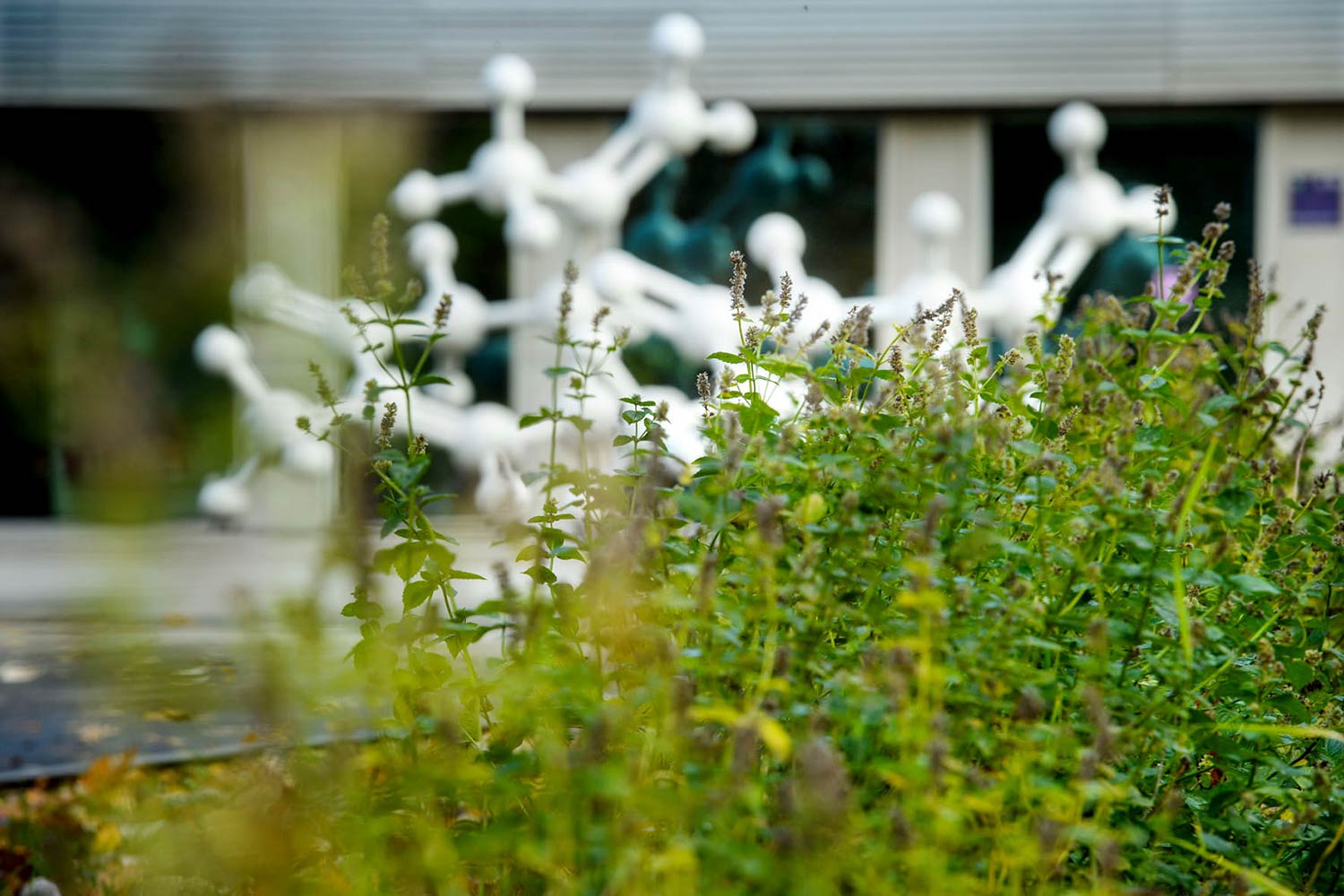25Mint and caraway beds
Nana mint

The last stop on the tour is a series of beds planted with different species of mint and caraway in front of the high-field MRT building. The beds are part of the artwork "Chirality" by Berlin-based artist Ulrike Mohr. More about the work can be found at the website.
Mint and caraway are herbaceous plants that have long been used both as spices and in traditional remedies. There are over 20 species of each of the two genera, native to temperate regions. The selection in these beds is based on the historical plant collection of the Emperor Charlemagne.
A common feature of mints and caraways is the bioactive molecule they contain, called carvone. This substance also explains why the mint and caraway beds are part of the artwork on the opposite side of the street. The sculptures there represent the two forms of carvone: S-(+)- and the R-(-)-carvone. Their chemical formula is identical: C10H14O. The only difference between the forms is their spatial arrangement: they mirror each other like left and right hands. This single difference makes S-(+)-carvone smell like caraway to us, and R-(-)-carvone smell like mint.
Nana mint - Mentha spicata var. crispa Nane
Nana is the Arabic name for mint. So the Nana mint is called mint mint. It is a natural variety of spearmint, its appearance is similar to Maroccan mint. Its growth is upright and bushy, the flower panicles are light pink to purple.
Nana mint originates from the Near East (Iran, Turkey, Arabian countries) where it is infused as tea and drunk pure or mixed with black tea. It contains comparatively little menthol, its taste is reminiscent of spearmint with a slightly smoky aroma.
Mint
Mint, botanical name Mentha, is a genus of plant in the labiate family or Lamiaceae. The names mint and mentha derive from the Greek nymph Minthe, who was transformed into the plant by Persephone to protect her from Hades, the god of the underworld. Findings in ancient Egyptian tombs show that peppermint was known as early as 1000 BC. Peppermint and other names refer to the intense smell of the plant. Other mint varieties also have names that refer to the similarity in taste to other plant species, such as apple mint or pineapple mint.
Mints are used to treat a variety of ailments. They contain essential oils; menthol and R-(-)-carvone are particularly important in this regard. For example, the leaves are used fresh or dried as a tea infusion, for problems in the gastrointestinal tract, bile and liver disorders, flatulence and abdominal pain, and menstrual cramps. The tea is often drunk for colds and inflammations of the upper respiratory tract, as well as for headaches. Steam distillation produces an essential mint oil from the flowering aerial parts; it can be taken internally for similar complaints, sometimes also as an inhalant. Externally, it is used for muscle and nerve pain. In addition to its role as a spice, mint is also an aromatic ingredient in liqueurs, toothpastes and chewing gum. In the cosmetics industry, it is used to perfume soaps and cosmetics.